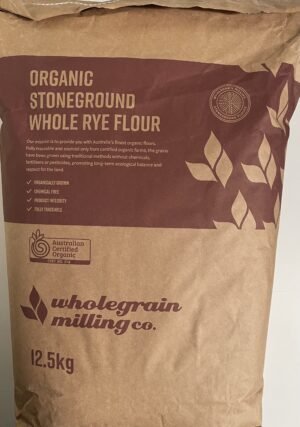The art of sourdough baking, a cherished tradition, intertwines history, science, and a touch of personal flair. Among the pivotal techniques any aspiring sourdough baker must grasp is the sourdough autolyse process. This method, more than a mere step in bread making, is the cornerstone for achieving the perfect texture, flavour, and crust in your sourdough. Whether you’re in Australia or anywhere around the globe, mastering autolyse is now within your reach through our premier online sourdough course. Explore our comprehensive Sourdough Baking Guide for more insights.
Table of Content
What Is the Autolyse Process?
At its core, the autolyse process is a simple yet profound technique involving the resting of flour and water mixture before adding yeast and salt. This rest period, ranging from 20 minutes to several hours, allows for the flour to fully hydrate, enzymes to activate, and gluten development to begin naturally. The result? A dough that’s easier to shape, more extensible, and capable of yielding a loaf with superior texture and flavour. Dive deeper into the benefits of proper dough hydration in our article on Dough Hydration and Texture.
A Journey Through Time: The Invention of Autolyse
The autolyse process was introduced to the world of baking by a French baker and scientist, Professor Raymond Calvel. Frustrated by the declining quality of bread in the mid-20th century, Calvel devised the autolyse method in the 1970s as a means to revive traditional bread making techniques. His method, emphasising minimal mechanical dough development and the importance of fermentation, revolutionised sourdough baking and is now a fundamental technique taught in baking courses worldwide, including Australia’s top sourdough online course. Learn more about Calvel’s revolutionary techniques in The Legacy of Professor Raymond Calvel.
The Science Behind Autolyse: What It Does to Your Dough
The magic of autolyse lies in its simplicity and the profound impact it has on dough. By allowing flour to fully hydrate, gluten strands begin to form and align naturally, reducing the need for extensive kneading. Enzymatic activity during this rest period also breaks down starches into simpler sugars, making them more available for yeast consumption, which in turn enhances the bread’s flavor and crust coloration. Additionally, the autolyse process makes the dough less sticky and more manageable, ensuring a pleasurable baking experience. For an in-depth exploration of the enzymatic activity in bread making, visit The Role of Enzymes in Bread Making.
Integrating Autolyse into Your Sourdough Routine
Incorporating the autolyse process into your sourdough baking is straightforward and yields transformative results. Start by mixing your flour and water and letting them rest. Once the autolyse period is over, add the remaining ingredients. This method not only improves the quality of your bread but also deepens your connection with the baking process, making each loaf a testament to the art and science of sourdough. For practical tips on integrating autolyse into your baking routine, check out our Sourdough Baking Tips and Tricks section.
Autolyse Process FAQs
Does the autolyse process require special equipment?
Absolutely not. The beauty of autolyse lies in its simplicity. All you need are your basic baking tools: a bowl, a scale, and your hands.
Can autolyse be used for all types of bread?
While autolyse is particularly beneficial for sourdough, its principles can be applied to improve the quality of virtually any bread.
How long should the autolyse process last?
The duration can vary based on the recipe and personal preferences, typically ranging from 20 minutes to 6 hours.
Will autolyse affect the sourness of my sourdough?
Indirectly, yes. By enhancing enzyme activity and fermentation, autolyse can contribute to a more complex flavour profile, including sourness.
Is autolyse suitable for beginners?
Absolutely. Autolyse is a foundational technique that can significantly improve your baking results, making it a perfect practice for beginners.
Can I skip the autolyse process if I’m short on time?
While autolyse is not strictly necessary, it is highly recommended for achieving the best possible texture and flavour in your bread.
Conclusion: Autolyse – A Gateway to Sourdough Excellence
The autolyse process, though simple, plays a crucial role in the art of sourdough baking. By understanding and applying this technique, bakers of all levels can elevate their bread-making skills, achieving loaves that are not only delicious but also a reflection of their dedication and craftsmanship. Whether you’re a novice eager to start your sourdough journey or an experienced baker looking to refine your skills, our online sourdough course, especially designed for enthusiasts in Australia, offers you the knowledge and tools needed to master the autolyse process and much more. Join us as we explore the fascinating world of sourdough, one loaf at a time. Unlock your baking potential and discover the secrets of sourdough with Australia’s leading online course Sourdough Bread Mastery Online Course






